The pneumonia epidemic caused by the new coronavirus is in a period of high incidence. In the beginning of this year, the whole province of Hubei has entered the stage of closure. Wuhan is a well-known optoelectronics industry base in China, and is in a leading position in the industrialization of fiber optic cables, optoelectronic terminals, and optoelectronic devices. At the same time, as an epidemic-prone area, what impact has Wuhan had on my country's optical communications industry? In this regard, the author made a brief analysis from the perspective of the supply chain.
On February 11th, the Ministry of Industry and Information Technology pointed out in a national telecom conference that the industrial communication industry resumed production and resumed production: The negative impact on the industrial communication industry as the epidemic developed gradually appeared. Since the outbreak, some economic activities have been halted, resulting in insufficient effective demand, difficulty in ensuring factors, and difficulties in production and operation of SMEs. At the same time, affected by the epidemic, some industries are expected to weaken, and their capacity to expand is facing constraints.
Although some industrial communications companies are currently facing some difficulties, the first quarter is the off-season of the communications industry. The epidemic broke out in the first quarter, and the impact on the telecommunications industry has not yet appeared. However, some people in the industry pointed out that the manufacturing of optical fibers and optical modules for communication transmission equipment in communication equipment is related. Due to the concentration of labor-intensive attributes and regional production concentration, if the epidemic situation does not continue to improve, from the perspective of the supply chain, there are certain risk, but since the epidemic has been controlled in February, the overall impact is not large.

Operators' network construction generally begins in the second half of the year, and the beginning of the year is the stage in which they formulate their annual capital expenditure plans. Specifically, the three major domestic operators will announce the capital expenditure plan for the year from the first to the second quarter of each year, bid for equipment in the second quarter, and build the network in the third to fourth quarter. This also means that as long as the epidemic ends in the first half of the year, it will not bring changes to its construction plan for the year.
The products purchased by Internet companies mainly involve servers, switches, etc., and there are many suppliers all over the country. For Internet companies, suppliers from Hubei are just some of its many supplier members. Currently, manufacturers in other regions of the country have started construction one after another, and the procurement needs of Internet companies in the first half of the year can also be solved through other supply channels.
Focus on the national optical communications market again: With the strong assistance of ZTE, Huawei and other communications equipment, China has become the world's largest consumer of optical devices, with a market share of approximately 35%. However, the high-end optical chip technology with high speed as the main feature is still in the hands of American and Japanese companies. At present, my country's high-speed optical chip localization rate is only about 3%.
Observing the development path of international giants, without exception, mergers and acquisitions. They continue to expand the industrial chain through mergers and acquisitions, and their products cover almost all links in the field of optical devices and optical modules, from passive to active, from chips to modules, and sit on the fortress of high-end technology in the industrial chain. In 2018, mergers and acquisitions among the top giants pushed the global optical communication technology competition to the head manufacturers.
From an application perspective, the current supply and demand of the domestic optical communications industry is mainly driven by 5G mobile communications. Take the telecom operators in China as an example. In 2019, China Mobile, China Unicom and China Telecom spent a total of 35.2 billion yuan on 5G, and the scale of the station construction reached 130,000. In addition, the Ministry of Industry and Information Technology officially issued 5G commercial licenses to the three major operators last year. According to the plans of the three major operators, the scale of investment in 5G will be further increased in 2020-2022. Therefore, for the optical communications industry, the next three years will be a good rising period, and the application of the industry is still in a steady rising stage.
1. filter
The 5G mobile communication system introduces large-scale antenna technology. The 5G antenna is mainly composed of a cover, an antenna array, a micro cavity filter, a TR component + PA + LNA + calibration, a shield cover, and a power module. Compared with the traditional 4G antenna, the main components of the 5G antenna are different in terms of material and quantity. In terms of filters, one 5G antenna needs to use 64-96 filters, which are made of metal or ceramic materials, and only one metal filter is configured on the 4G antenna. In the context of 5G network construction, Yole Development predicts that the global filter market will reach USD 22.5 billion by 2023, with a compound annual growth rate of 18.81%.
2. 5G optical module
In the 5G bearer network, the optical module is used to connect the device and the optical fiber. The main function is to complete the photoelectric and electro-optical conversion of the optical signal. Both the wireless network and the transmission network need high-speed optical module products. Specifically, 5G bearer requires 25G/50G/100G/400G optical modules and equipment. In some equipment, the cost ratio can even reach 50%-70%.
The 4G bearer network transmission is divided into two sections: "Fronthaul-backhaul", while the 5G bearer network transmission is divided into three sections: "Fronthaul-Middlehaul-Backhaul". The increased media transmission link makes 5G enhance the coverage of high-frequency signals, and also greatly promote the market demand for optical modules. In addition, the speed of optical modules will also be upgraded to 25G, 50G, 100G and 200G. In short, the optical modules used in the 5G era have greatly improved the quantity and value.
China Telecom data shows that the fronthaul, midhaul and backhaul networks of the transmission network in the 5G era are equally important. Among them, the size of the fronthaul is about 25 billion, the size of the midstream is about 8.3 billion, the size of the backhaul is about 14.4 billion, the size of the core network is about 14.1 billion, and the total market space will exceed 60 billion yuan; China Mobile predicts that the entire 5G network will give High-speed optical modules bring tens of millions of increments, and the total demand for 5G optical modules will be 2 to 4 times that of the 4G era. According to the survey data of "International Electronic Business Conditions", China's optical module market will exceed 17 billion yuan by 2022.
Compared with challenge, there are more opportunity for C-light in 2020 despite the COVID-19. C-light optical modules shows promising by balance controlled in terms of supply and the market demand.











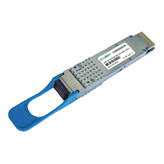






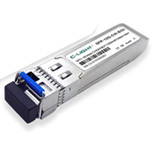





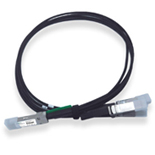
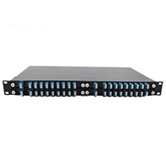
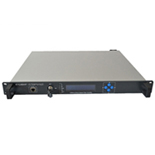
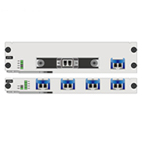

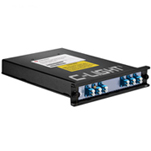
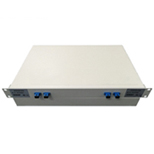


 Your current position:
Your current position: 



